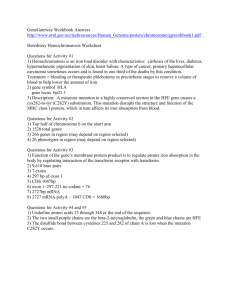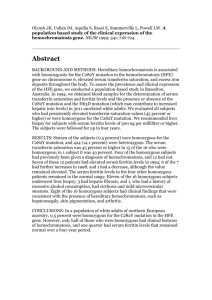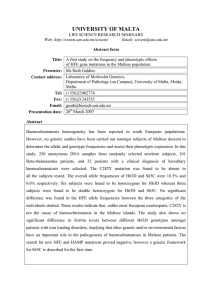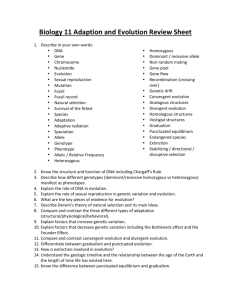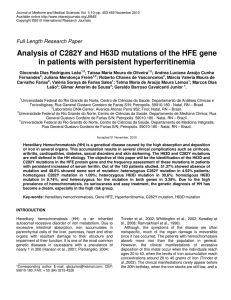Hereditary Hemochromatosis of
advertisement
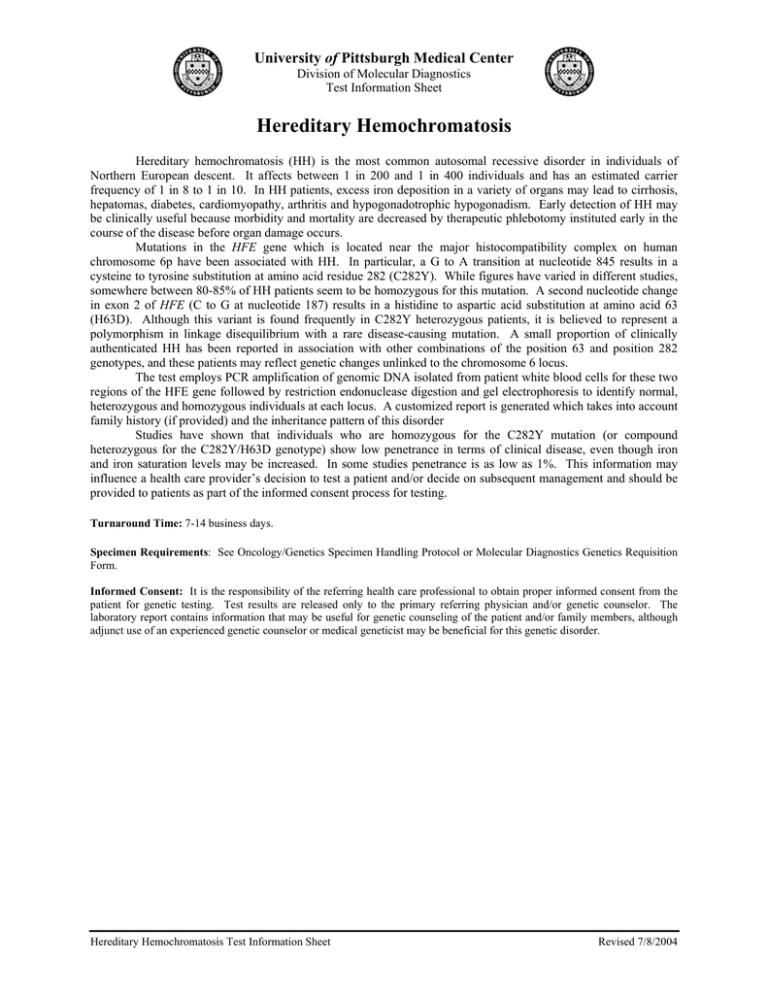
University of Pittsburgh Medical Center Division of Molecular Diagnostics Test Information Sheet Hereditary Hemochromatosis Hereditary hemochromatosis (HH) is the most common autosomal recessive disorder in individuals of Northern European descent. It affects between 1 in 200 and 1 in 400 individuals and has an estimated carrier frequency of 1 in 8 to 1 in 10. In HH patients, excess iron deposition in a variety of organs may lead to cirrhosis, hepatomas, diabetes, cardiomyopathy, arthritis and hypogonadotrophic hypogonadism. Early detection of HH may be clinically useful because morbidity and mortality are decreased by therapeutic phlebotomy instituted early in the course of the disease before organ damage occurs. Mutations in the HFE gene which is located near the major histocompatibility complex on human chromosome 6p have been associated with HH. In particular, a G to A transition at nucleotide 845 results in a cysteine to tyrosine substitution at amino acid residue 282 (C282Y). While figures have varied in different studies, somewhere between 80-85% of HH patients seem to be homozygous for this mutation. A second nucleotide change in exon 2 of HFE (C to G at nucleotide 187) results in a histidine to aspartic acid substitution at amino acid 63 (H63D). Although this variant is found frequently in C282Y heterozygous patients, it is believed to represent a polymorphism in linkage disequilibrium with a rare disease-causing mutation. A small proportion of clinically authenticated HH has been reported in association with other combinations of the position 63 and position 282 genotypes, and these patients may reflect genetic changes unlinked to the chromosome 6 locus. The test employs PCR amplification of genomic DNA isolated from patient white blood cells for these two regions of the HFE gene followed by restriction endonuclease digestion and gel electrophoresis to identify normal, heterozygous and homozygous individuals at each locus. A customized report is generated which takes into account family history (if provided) and the inheritance pattern of this disorder Studies have shown that individuals who are homozygous for the C282Y mutation (or compound heterozygous for the C282Y/H63D genotype) show low penetrance in terms of clinical disease, even though iron and iron saturation levels may be increased. In some studies penetrance is as low as 1%. This information may influence a health care provider’s decision to test a patient and/or decide on subsequent management and should be provided to patients as part of the informed consent process for testing. Turnaround Time: 7-14 business days. Specimen Requirements: See Oncology/Genetics Specimen Handling Protocol or Molecular Diagnostics Genetics Requisition Form. Informed Consent: It is the responsibility of the referring health care professional to obtain proper informed consent from the patient for genetic testing. Test results are released only to the primary referring physician and/or genetic counselor. The laboratory report contains information that may be useful for genetic counseling of the patient and/or family members, although adjunct use of an experienced genetic counselor or medical geneticist may be beneficial for this genetic disorder. Hereditary Hemochromatosis Test Information Sheet Revised 7/8/2004

